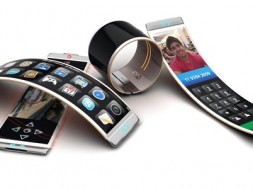Today’s cellphones not only allow you to keep you in touch with family and friends via voice or text message, but you can surf the web, send email, and even take pictures and video. So what else is left for this pocket miracle? Here’s a few ideas that are coming our way in the very near future.
The most annoying aspect of any smartphone is the terrible battery life and recharging time. Most often, your battery will run out of power and you’ll have to plug it in to charge for a couple of hours.
Thanks to insufferably smart MIT people who have been playing with. However, the future of lithium-ion technology is looking better and better every day. As this technology increases charge times in the future will likely be reduced to mere seconds.
Current charging of a cellphone involves manupilating actual lithium ions and you can’t rush the process, it just won’t work. But as we move out of the lithium-ion stone age, more improved battery technology will allow the ions to fly to where they need to be at high rates of speed. This change in technology will also significantly cut back on the recharge wear and tear caused by recharging over time.
This technology isn’t really new, it’s just modifications of the existing technology, which means we can expect to see it available fairly soon.
You could argue that using credit to pay for things is a bit of a slippery slope for some folks and making it even easier to use credit could be bad news, but isn’t it kind of cool that you could
Currently in development are methods to use your phone as a payment method just like a credit card. Already in trials in Japan, the idea is to make your phone work like a quick pass credit card. You won’t need to swipe it, you’ll just need to bring it close to a merchant sensor. Your phone will be linked to your bank account or credit card account which gets charged instantly. The key here is to use password protection technology to prevent anyone from stealing your phone and going on a 2-day shopping spree.
Continental airlines was the first airline to introduce the electronic boarding pass system. The system will send your boarding pass to your phone in the form of a readable 2-D barcode that is scanned to allow you to board the plane. Hence, there is no need to worry about printing or losing your boarding pass. Expect to see this technology used by many more airlines in the very near future.
Point and find technology will also work its way into your pocket and onto your new smartphone. Your phone will be capable of telling you just about anything you point it at.
By simply pointing it at a product or advertisement in a store the built in GPS, camera, and an internet connection will tell you what you’re looking at and then provide you with relevant information. In a store, the use of RFID technology will allow you to scan products you’re considering purchasing to find out the price and other details. Food products will display calorie counts or anything else you want to know about the item being scanned.
Almost every smartphone on the market has a camera in it. However, even if you have a 16 megapixel camera on your phone, you can’t expect to take high quality images. For that, you’d need lens technology and that simply isn’t going to fit on a smartphone. However, there’s technology on the way that will enable smartphones to produce a high resolution image.
Silent Speech technology in the future may also allow the ability to speak without actually making a sound. This technology will work with speech through the movement of the throat and larynx to determine what is being said. Imagine being able to carry on conversations without anyone hearing?





